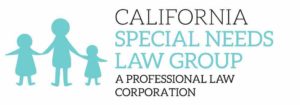The History of Special Education in America
Education that fully accommodates the unique learning disabilities of special needs children is actually a relatively new and young installment of our public education system.
Prior to the 1970s, students with special needs had limited options and virtually no chance of succeeding by way of the free public education system alongside non-special needs children. The choices of the parents of these kids were one of the following:
- Get their education at home — Parents would often resort to pulling their kids out of school and teaching them at home. While many parents choose to homeschool their children today, it’s often for reasons other than a hindering learning disability.
- Pay for private school — Before the 1970s, private school was (and still is, in large part) an expensive luxury. While some families could afford it, the greater percentage could not, therefore leaving them with few options for educating their kids.
- Pay for a private tutor — This kind of education crossed the two previous options together. Once again, this came down to an issue of cost, because if parents couldn’t afford private school, they weren’t likely to be able to afford a tutor either.
During the earlier half of the 20th century, special schools dubbed “institutions” were available for students with learning disabilities, but would often simply integrate those children with those with mental illnesses, where little if any education would ever take place.
There’s no question that the odds were stacked against learning disabled children. However the 1970s would turn all that upside down with just a few pieces of legislation.
Turning Point
During the 1930s, grassroots and advocacy groups began to form to lobby for the inclusion and accommodation of special needs kids in state and federally funded public schools. The culmination and fruit of these efforts came to its height in the 1970s with the passage of the Education for All Handicapped Children Act (EHA) and the Individuals with Disabilities Education Act (IDEA).
These two laws dovetailed one another as EHA made it mandatory that the right to a public education be afforded to all children regardless of their limitations or disabilities, while IDEA required that individualized accommodations be provided for children with qualifying disabilities.
Other laws during this decade also played a role in providing strong foundational platform to support learning disabled children, including the Rehabilitation Act of 1973, which guaranteed civil rights to all disabled people, and included the right to a free public education.
These years marked an incredibly positive turning point for the parents and advocates of special needs kids, and would eventually lead to the extinction of the private special needs “institutions.”
Moving Forward
Fast forward to present time and you have nearly all special needs education occurring in the public schools, with private or homeschool options being taken as a matter of personal choice and not out of desperation or necessity.
Likewise the teachers who educate these students are being provided with proper training and education to better assist special needs children and make sure that they are getting the best education possible.
In the 2001 and 2004 under President George W. Bush, the No Child Left Behind Act (NCLB) assured a greater measure of accountability to public schools to insure the proper education of special needs kids. The law also provided assistance for better technology and loan programs that were targeted to supper those who were learning disabled.
While there always seems to be room for improvement in America’s education system, we are certainly due some credit for turning our history in a positive direction when it comes to special needs kids.
Everyone should have a chance at a great education. Thankfully our country is continuing to move in that direction.



Leave a Reply
Want to join the discussion?Feel free to contribute!